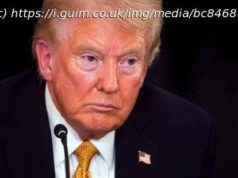In 1961,14 statues were stolen from the Archaeological Survey of India site museum in Nalanda, eastern India. Now one is to make the journey home.
Lynda Albertson, who heads the Association for Research into Crimes Against Art (ARCA), was in the Netherlands on business when she decided to attend the European Fine Arts Fair in Maastricht.
In a blog post detailing her experience, she said she was at the trade fair “to keep an eye open for looted antiquities which might be on sale with fabricated provenances — artworks from the ancient past which have no legitimate pedigree as they have been looted directly from the ground.”
She was not expecting to find an object stolen from a museum, as these thefts are usually registered with police and included in art theft databases.
But when she saw the Buddha statue at one of the international art dealers’ stands, she had a strong suspicion she had accidentally come across something big.
So she sent a photo of the artifacts to Vijay Kumar, the co-founder of the India Pride Project, a volunteer network that tracks and brings back India’s stolen heritage.
Together, after several cross-checks, they decided it was a match with the statues stolen in 1961 and contacted police.
“I identified the piece one day before the fair closed,” Albertson told CNN. “That’s insufficient time to get ILORs (International Letters of Request) for assistance from India to Dutch police to seize the piece. So the dealer was informed that there would be an investigation in their home country, the UK, and agreed to take the object off sale while the police conducted their investigation.”
True example of cooperation
Since it was stolen, the statue had changed hands several times before eventually being delivered to the London-based dealer, according to the Metropolitan Police’s art and antique unit, which took over the case.
The dealer is not being named publicly having agreed to voluntary forfeiture, Albertson said.
“We are delighted to be able to facilitate the return this important piece of cultural heritage to India,” the Met’s Detective Constable Sophie Hayes said in a statement.
“This case has been a true example of cooperation between law enforcement, the trade and scholars,” she added. “Particular credit must go to the eagle-eyed informants who made us aware that the missing piece had been located after so many years.”






